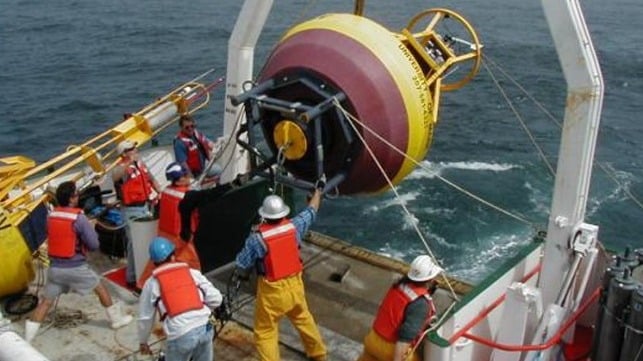Opinion: Our Ocean Infrastructure Needs Support, and Congress Can Help

In August, the U.S. Senate passed a historic, bipartisan $1 trillion infrastructure package that transforms our national conversation on infrastructure. Among many laudable components, it includes an allocation of $150 million for essential ocean infrastructure: the Integrated Ocean Observing System, or IOOS, the safety net for our nation’s maritime endeavors.
This investment is long overdue, perhaps because few know exactly what ocean observing infrastructure is, or its value. IOOS generates information that underpins our maritime economy, supporting navigation, safety, and coastal resilience. We’re talking about the lighthouses of the 21st century. When it deteriorates, we jeopardize $1.7 trillion in foreign trade flowing through U.S. ports and 3.3 million jobs. Our marine economy represents $397 billion of our GDP and is growing nearly twice as fast as the overall national economy. Without strong infrastructure, we cannot sustain that growth.
IOOS has constructed a coast-to-coast network that unites seventeen federal agencies and eleven regional associations with a shared purpose. Because it is largely invisible, IOOS infrastructure is easily overlooked. Its value, however, makes it worth knowing. Observing buoys are jacks-of-all-trades, reporting sea state conditions in real time to aid navigation and give us eyes in the deep. Buoy-supplied bottom temperatures, for example, help fishermen find their quarry. Gliders – sleek, self-piloting underwater robots – listen for endangered whales to reduce ship strikes and provide warnings when hurricanes intensify. When boaters go missing, Coast Guard rescue teams rely on oceanographic forecasts to narrow search fields. Those models ingest data from buoys, gliders, and high-frequency radar stations that track surface currents.
Some of this infrastructure has been monitoring the same locations for decades. As climate change continues apace, long-term datasets are increasingly important in adapting to changing ocean ecosystems.
What is the cost of sustaining these services? A national assessment put it at around $500 million per year, but the current budget for IOOS is less than a tenth of that. Our program at NERACOOS – the Northeastern branch of IOOS – recently received $3.4 million from IOOS, part of a $41 million award spread across all eleven regional associations. So many worked tirelessly to champion our cause – from New England’s leaders in Congress to ocean users of all stripes – and we are incredibly grateful for the support.
This support, however, masks strain. As with bridges and roads that are kept in service beyond their intended lifespan, many of these 21st century lighthouses are showing their age when we need them most. With effects of climate change rising alongside the growth of offshore wind and evolution of the fishing, aquaculture, tourism, and shipping industries, commensurate expansion of ocean observing infrastructure is imperative. The $150 million investment in the bipartisan Senate bill is critical and I urge the House to pass it into law.
We are a nation built on the ocean economy. The territorial waters of the U.S. are the world’s second largest and nearly a third of our population lives in coastal counties. It is essential that we modernize ocean observing systems to support our coastal communities, economies, and ecosystems. New national infrastructure investments must extend out well past where the waves roll in.
Jake Kritzer, Ph.D. is Executive Director of the Northeastern Regional Association of Coastal Ocean Observing Systems (NERACOOS).
The opinions expressed herein are the author's and not necessarily those of The Maritime Executive.
